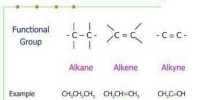The term tar generally means the liquid decomposition product of any organic substance, for example wood or peat. It is with coal tars specifically that this chapter is concerned. Coals vary very widely in nature. The most important determinant in the ‘nature’ of a coal is its degree of maturity along the coalification series. The least mature coals are lignites a.k.a. brown coals. Scenes of production of these include N. Dakota USA and the Latrobe Valley in south eastern Australia. More mature coals include bituminous coals, and it is from such coals that coke for use as metallurgical is made. The more mature the coal, the smaller the yield of decomposition products including tars.
In general, the fate of coal tars is simply that they are burnt along with the rest of the coal. When coal is burnt decomposition and combustion are concurrent, so tars and gases having been released simply burn alongside the residual solid. It is when coal is used for purposes other than direct combustion, that is when it is carbonised or gasified, that the tars are of importance. In discussions of liquid products of coal decomposition, a distinction is sometimes made between tars and oils, on the basis of solubility in particular solvents. The author’s view is that this is pointless if not confusing and is better avoided.
Because coals vary so widely, so do coal tars. Even the tar from a particular coal will vary in composition depending on the ceiling temperature of carbonization, the coal particle size and the heating rate. Carbonization of coal is a 19th Century technology by no means obsolete in the 21m. The question of comparability of unprocessed coal tars with heavier petroleum fractions has been the subject of much debate for a century or more. The term ‘coal tar fuels’ (CTF) means fuel oil comprising not petroleum residue as with such fuels discussed in the previous chapter, but coal-derived liquid.
These were once widely used in applications including steam raising, interchangeability with petroleum residual fuel oil being aimed for. The property most difficult to match is the cloud point, which is higher for CTF. This necessitates flushing out with a solvent such as kerosene when petroleum fuel oil is used in plant previously used with CTF. The debate on the feasibility of gasoline and diesel substitutes from the distillation of coal tar has been going on at least since 1923.












